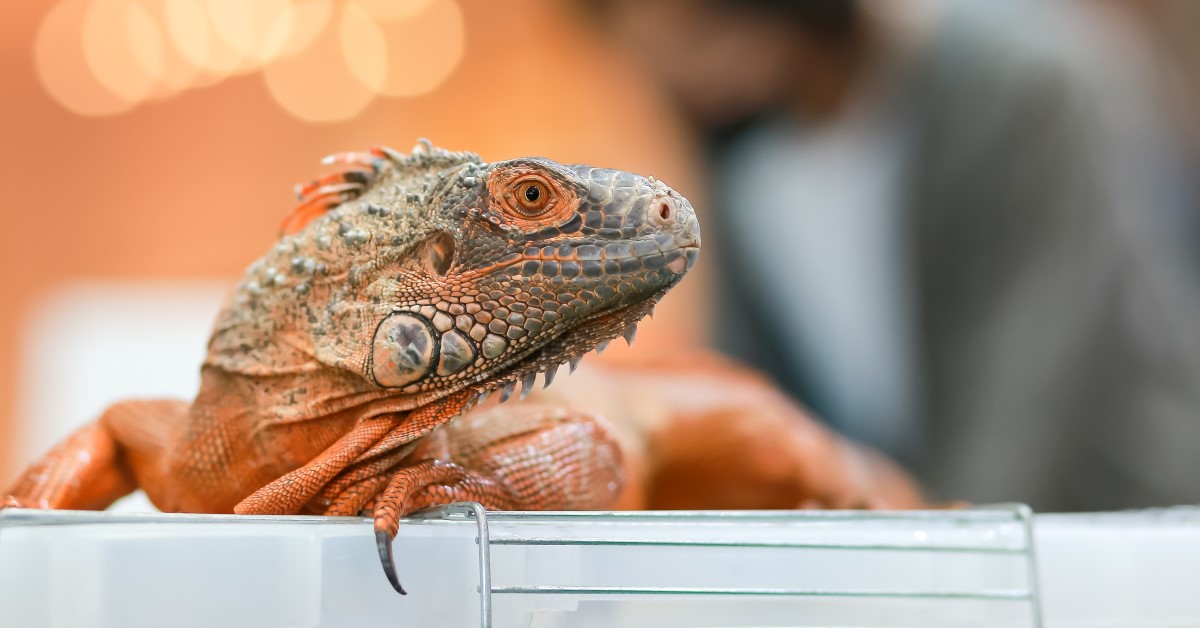Tortoise or Turtle? Understanding the Differences
Tortoises and turtles have some fascinating differences that potential owners need to know about.

Have you ever used the words “tortoise" and “turtle" interchangeably? Many people do, for the simple reason that they don't recognize the differences between these two shelled reptiles. As fellow members of the Chelonian order of animals, they do indeed have many similarities -- but they also offer significant differences that will impact how you should care for the animal in question. Let's explore the essential differences that every aspiring turtle or tortoise owner should bear in mind.
Environment
One of the easiest ways to tell a tortoise from a turtle is by observing its preferred natural environment. Tortoises are exclusively land-based reptiles, generally inhabiting flat areas such as grasslands, forests, and deserts. They also prefer warmer climates over cooler ones.
Turtles display a lot more diversity in their chosen environments. Unlike tortoises, which confine themselves to the warmer continents, turtles can be found almost everywhere on Earth. They tend to live in aquatic environments such as lakes, rivers, and oceans, although semi-aquatic turtles are happy enough to spend some of their time on land. (Turtles lay and bury their eggs on land as well.) A turtle owner must invest in an enclosure that accounts for this preference. A tortoise owner should offer both indoor and outdoor spaces, including areas where a tortoise can pursue its love of digging.
Anatomy
While turtles and tortoises both have shells, those shells tend to differ in form. Tortoises usually sport a thicker, more uneven, more dome-shaped shell. This relatively lumpy shell offers an additional degree of protection against the tortoise's common land-based predators. By contrast, the sleeker, smoother shell of the typical turtle helps them zip through water more quickly and easily -- an equally useful feature for avoiding aquatic prey.
Turtle shells and tortoise shells also grow differently. Turtles shed their shells over time, with new shell material replacing the shedded portions. Tortoises shells don't slough away; instead, they just keep growing and thickening, making the shell harder and more resistant to attack as the years go by.
Another obvious anatomical difference concerns a turtle or tortoise's appendages. Turtles have webbed or flipper-like feet to aid in swimming, while tortoises cross land on scaly, stumpy, clawed feet.
Diet
Diet represents one of the most important and noticeable differences between tortoises and turtles. Turtles are omnivores, meaning that they can get their nutrition from both plant and animal sources. Typical turtle foods range from grasses, fruits, and vegetables to shellfish, worms and insects. Tortoises subsist on a strictly vegetarian diet, getting their nutrition from fruits, leafy vegetation, and grasses.
Pet shops sell pellets suitable for both turtles and tortoises. This option should serve as your pet's primary food source because it's formulated to provide a healthy balance of nutrients. When you feed pellets to your turtle in an aquatic enclosure, clean up any remaining food after 15 minutes to keep it from degrading and polluting the water. Turtles and tortoises should receive only one feeding per day.
Behavior
Turtles and tortoises are more similar than different in their behavioral characteristics. For instance, while neither creature socializes with its own kind (with competing males getting downright aggressive with each other), both will accept human handling once they get used to it. Even so, excessive handling of a baby turtle can cause stress for the animal, while large adult tortoises may simply grow too bulky and heavy to handle. In any case, both animals would prefer to be left alone most of the time, making interaction a challenge for pet owners more accustomed to affectionate dogs and cats.
One key difference between turtle and tortoise behavior involves hibernation. When the weather turns cold, tortoises may go into a specific form of hibernation known as brumation, eating extra food and then shutting down their everyday activities until things warm back up. Turtles don't hibernate at all.
Health Concerns
Health challenges for turtles and tortoises can overlap to some degree, although each animal tends to suffer more from specific conditions. The most common issues that can plague turtles include digestive system parasites, vitamin A deficiency, and pus-filled abscesses which can form on practically any part of the body. Tortoises are more likely to suffer from metabolic bone disease, constipation, respiratory infections, and a bacterial infection called mouth rot. Both animals can develop shell rot, a bacterial or fungal infection that irritates and damages the shell.
With proper veterinary care, both turtles and tortoises can enjoy years or even decades of happy, healthy life. However, these creatures can be quite different in terms of average life span. A turtle can live for up to 50 years, but a tortoise can keep going for an astonishing 200 years. Especially if you own a tortoise, make appropriate long-term plans for your pet's care -- because it might easily outlive you!
Your Veterinarian Can Help You Choose Wisely
If you plan to become either a turtle owner or a tortoise owner, make sure you know a reputable veterinarian who specializes in exotic pets. They can discuss the pros and cons of both reptiles and help you make the choice that's right for both you and your new pet. Then follow your vet's advice regarding diet, wellness exams, and other smart practices to help your turtle or tortoise thrive!
Ready to start saving money on pet wellness care?
Then take a look at Mint Wellness, the pet wellness plan that provides fast reimbursement on routine pet care. Save on vaccinations, wellness exams, preventatives, dental, and more!
Learn More
